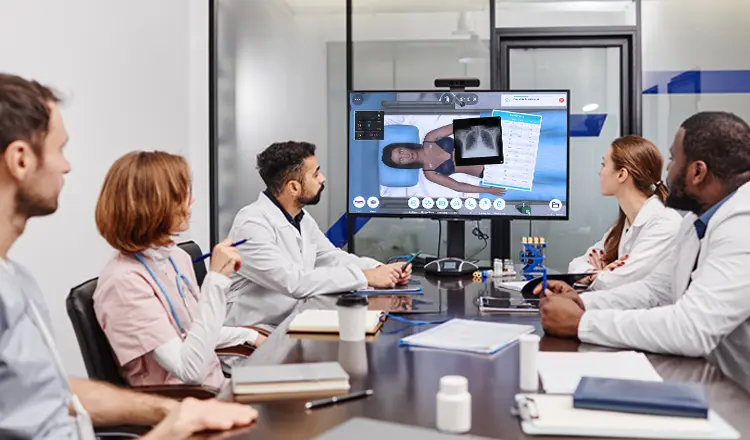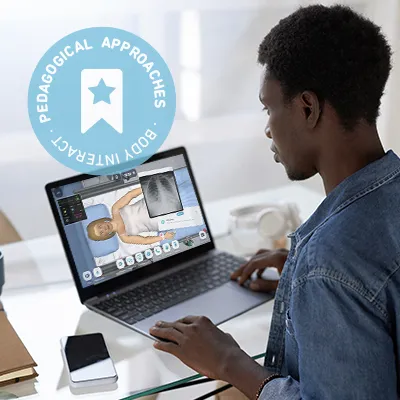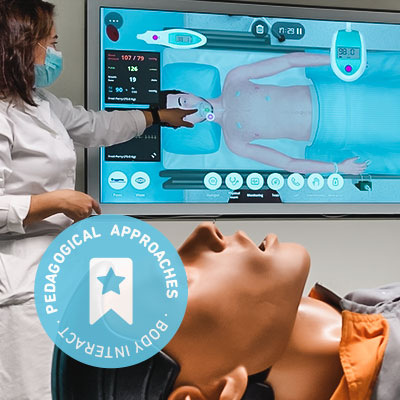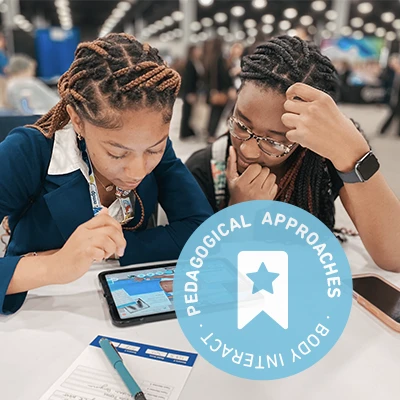Pedagogical Approaches with Body Interact | Problem-Based Learning
What is Problem-Based Learning?
Problem-Based Learning (PBL) in medical education is an instructional method where students learn through the experience of solving an open-ended problem. It is a student-centered approach, often used in small group settings, where learners are presented with a clinical case or problem to solve, rather than receiving direct instruction on a topic.
Key aspects of Problem-Based Learning include:
Real-World Problems: PBL uses realistic medical cases that students might encounter professionally. These cases are typically complex and require integrating knowledge from various medical disciplines.
Small Group Learning: Students work in small groups, promoting collaboration and discussion. Each group usually consists of 6-8 students with a tutor or facilitator.
Self-Directed Learning: Students identify what they need to learn to solve the problem and engage in self-directed study to gather the necessary information.
Facilitator Role: The facilitator guides the discussion, ensuring that learning objectives are met, but does not provide direct answers. His role is to stimulate critical thinking and keep the group focused.
Integration of Basic and Clinical Sciences: PBL encourages the integration of basic science knowledge with clinical application, promoting a deeper understanding of how scientific principles underpin clinical practice.
Iterative Process: The process involves cycles of problem identification, information gathering, solution proposal, and reflection. This iterative approach helps refine problem-solving and critical thinking skills.
How can Problem-Based Learning be applied with Virtual Patients Body Interact?
Problem-Based Learning can be effectively integrated with virtual patients to enhance medical education, providing a dynamic and interactive learning experience.
Body Interact Case Presentation
- Virtual Patient Scenario: Introduce students to a virtual patient scenario, simulating a real clinical case. This may include patient history, symptoms, and initial test results.
- Interactive Features: Students can ask the virtual patient questions, monitor vital signs, order tests, and receive results.
Small Group Discussion
- Collaborative Learning: Students work in small groups to discuss the virtual patient case, identifying the key problems and formulating hypotheses about potential diagnoses.
- Role of Facilitator: A facilitator guides the discussion, ensuring that students explore all relevant aspects of the case and think critically about their decisions.
Self-Directed Learning
- Information Gathering: Students identify what additional information they need and engage in self-directed learning to research the necessary clinical knowledge.
Diagnosis and Management Plan
- Formulating a Plan: Based on their research and group discussions, students propose a diagnosis and develop a management plan for the virtual patient.
- Decision-Making: Students make decisions regarding further tests, and treatments, need to contact other specialists, and follow-up care, simulating real-life clinical decision-making.
Feedback and Reflection
- Virtual Patient Feedback: Body Interact provides feedback on the student’s decisions.
- Reflection: Encourage individuals and groups to reflect on their learning process, discussing what they did well and what they could improve.
Assessment and Evaluation
- Formative Assessment: Use the virtual patient interactions to assess students’ clinical reasoning and decision-making skills in a formative manner.
- Summative Assessment: Incorporate virtual patient cases into summative assessments to evaluate students’ overall competence and readiness for clinical practice.

What are the benefits of combining Problem-Based Learning with Body Interact Virtual Patients?
Combining Problem-Based Learning with virtual patients provides not only the specific advantages of learning through virtual patient simulation (realistic simulation, standardization of the learning experience, immediate feedback by the virtual patient, accessibility and flexibility of the platform, variety of cases, and integration of technology) and PBL but also group learning advantages, as it can be seen as a small-group teaching method:
Student-centered approach: Promotes active learning, enhances comprehension and retention, and cultivates lifelong learning skills.
Constructivist approach: Students activate prior knowledge and expand upon existing conceptual frameworks.
Generic competencies: Enables students to cultivate essential skills and attitudes valuable for their future careers.
Integration: Supports the implementation of a cohesive core curriculum.
Motivation and engagement: Fun for students and facilitators, and it ensures that all students are actively involved in the learning process.
‘Deep’ learning: By encouraging students to engage with learning materials, connect concepts to real-life situations, and enhance their understanding, deep learning is promoted, though they may be uncertain about the appropriate amount of self-directed study to undertake.
Problem-Based Learning best practices suggestions
- Training of Facilitators: Facilitators need to be trained in both PBL and the use of virtual patient technology to guide students effectively. They should be skilled in guiding discussions, encouraging student participation, and ensuring that learning objectives are met without directly providing answers.
- Student Engagement/Case Selection: Maintaining student engagement requires a suitable selection of clinical cases according to the student’s level and adequate preparation by the facilitator to guide the learning experience. Cases should be complex enough to stimulate critical thinking and integrate basic and clinical sciences.
- Clear Learning Objectives: Ensure that objectives align with the overall curriculum goals and competencies required for clinical practice.
- Student Preparation: Prepare students for the PBL process by providing introductory sessions on the PBL methodology, self-directed learning, and collaborative teamwork.
- Group Composition and Dynamics: Form small, diverse groups of 6-8 students to encourage active participation and varied perspectives. Monitor group dynamics and address any issues that may arise to maintain a productive learning environment.
- Structured Sessions: Organize PBL sessions into structured phases – initial case presentation, identification of learning objectives, self-directed study, group discussion, and synthesis of information. Each session should have a clear timeline and objectives.
- Integration of Basic and Clinical Sciences: Ensure that PBL cases integrate basic science knowledge with clinical application. This helps students understand the relevance of scientific principles to patient care.
- Assessment and Feedback: Use formative assessments to provide ongoing feedback on students’ performance. Summative assessments should evaluate both individual and group learning outcomes. Incorporate self-assessment and peer assessment to encourage reflective practice. Include reflection and debriefing sessions at the end of each PBL cycle. Encourage students to reflect on their learning process, identify areas for improvement, and consolidate their knowledge.
- Resource Availability: Provide access to a wide range of learning resources, including textbooks, online databases, and papers. Ensure that students have the tools they need for self-directed learning.
- Interprofessional Collaboration: Incorporate opportunities for interprofessional education within PBL. Collaborate with other health disciplines to provide a more comprehensive understanding of patient care and teamwork.

Who is using this instructional strategy?
Profesora Josefina Serrano from La Salle University, in Mexico and several professors from the University of Algarve are successfully implementing this hybrid approach of Problem-Based Learning with Body Interact.
Want to delve deeper into Problem-Based Learning?
Explore an example of a PBL Session with a Body Interact Outline

Want to know more about this pedagogical approach? Would you like to share your pedagogical approach with us?
Schedule a meeting
References
1- Boelens, R., De Wever, B., Rosseel, Y. et al. What are the most important tasks of tutors during the tutorials in hybrid problem-based learning curricula? BMC Med Educ 15, 84 (2015). https://doi.org/10.1186/s12909-015-0368-4
2- Davis MH. AMEE Medical Education Guide No. 15: Problem-based learning: a practical guide. Med Teach. 1999;21(2):130-40. doi: 10.1080/01421599979743. PMID: 21275726.
3- Wood DF. Problem-based learning. BMJ. 2003 Feb 8;326(7384):328-30. doi: 10.1136/bmj.326.7384.328. PMID: 12574050; PMCID: PMC1125189.
Trullàs, J.C., Blay, C., Sarri, E. et al. Effectiveness of problem-based learning methodology in undergraduate medical education: a scoping review. BMC Med Educ 22, 104 (2022). https://doi.org/10.1186/s12909-022-03154-8









